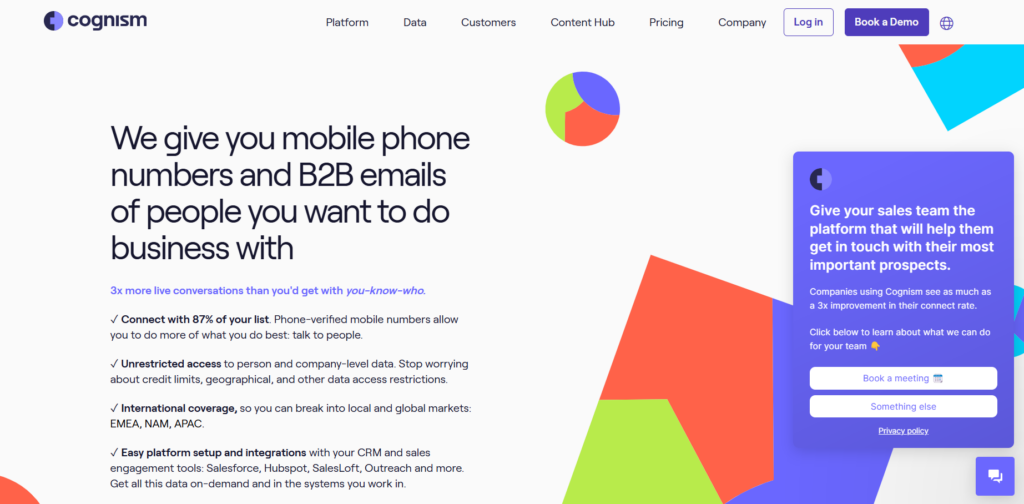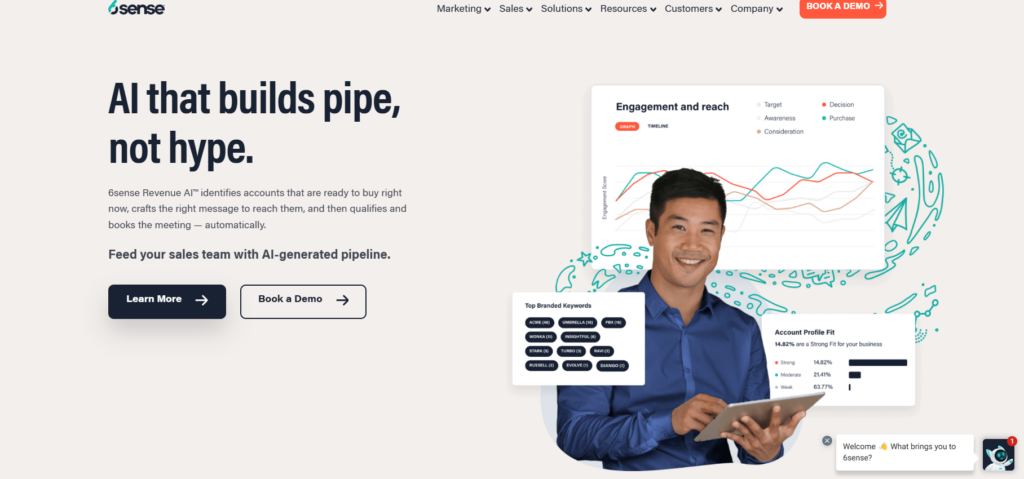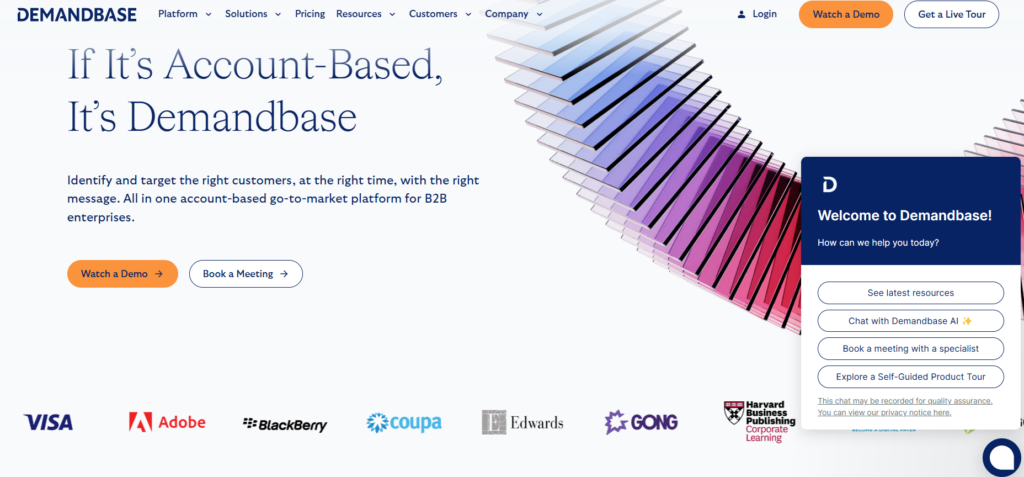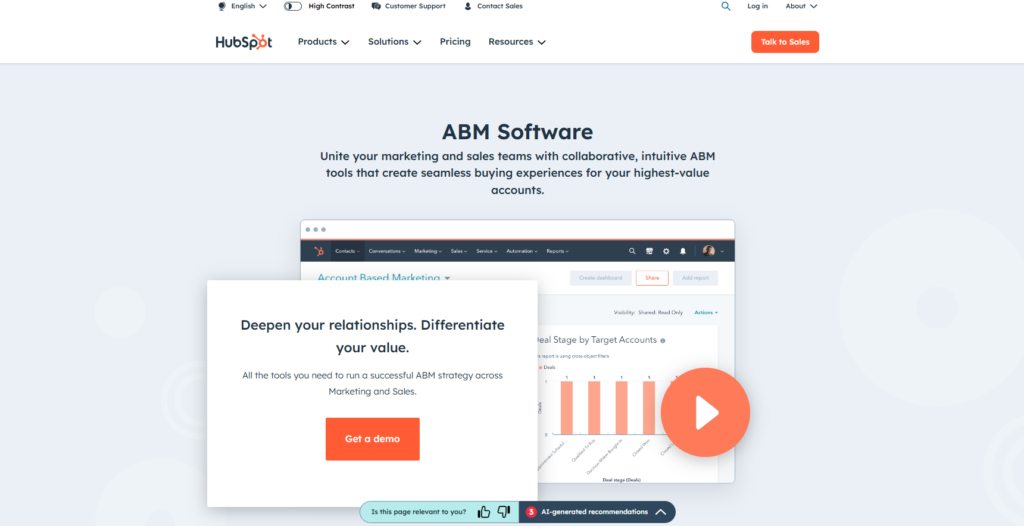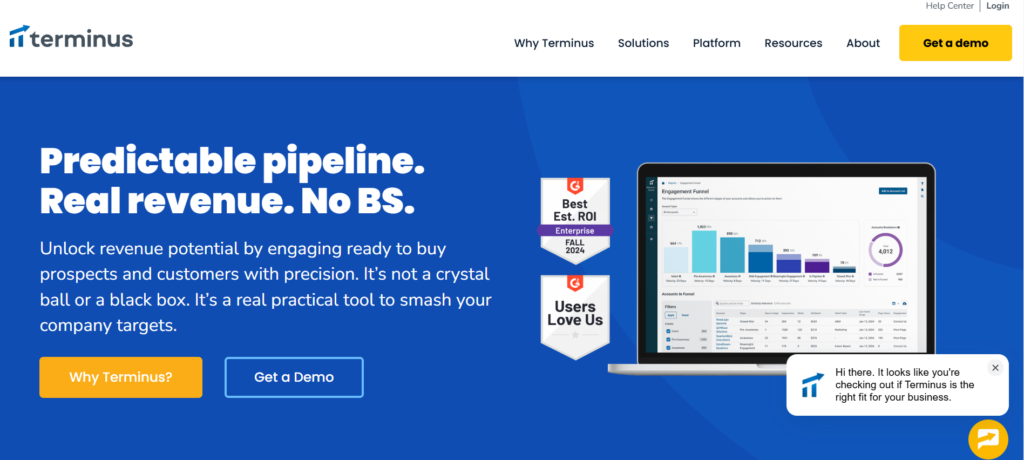Did you know that many marketers say Account Based Marketing delivers 97% higher ROI than any other marketing strategy? Traditional lead generation tactics fall short when it comes to engaging high-value accounts. That’s where Account-Based Marketing (ABM) software steps in by helping businesses identify, engage, and nurture the prospects that matter most.
By aligning sales and marketing teams around shared goals, ABM platforms ensure every outreach is personalized and data-driven. Whether you’re looking to shorten sales cycles, increase conversions, or build long-term client relationships, ABM software provides the structure and insights needed to strengthen your pipeline and drive sustainable growth.

Transforming Your B2B Pipeline with Account-Based Marketing Software
What is ABM Software?
Account-Based Marketing (ABM) software automates the identification, engagement, and nurturing of high-value accounts. Unlike broad marketing campaigns that aim to attract a large audience, ABM zeroes in on specific companies or stakeholders, delivering customized messages and experiences to influence decision-makers directly.
From lead generation to retargeting campaigns and analytics reporting, ABM tools integrate marketing and sales efforts to achieve greater alignment and higher ROI.
How ABM Software Works
ABM software streamlines the complex process of engaging high-value accounts by coordinating efforts between sales and marketing teams. It provides the tools needed to target the right accounts, align outreach across multiple channels, and track performance in real-time. Here’s how ABM software operates:
1. Identify and Segment Key Accounts
- Analyze intent, behavioral, and firmographic data to identify accounts with the highest conversion potential.
- Segment accounts based on industry, size, geography, and buying signals.
- Use AI-powered tools to discover in-market accounts actively searching for solutions.
Personalize Content and Outreach
- Develop customized messaging for different stakeholders within the same account.
- Coordinate multi-channel campaigns across email, ads, events, and social media to maintain consistent messaging.
- Provide personalized experiences at each touchpoint to build trust and relevance.
Engage Decision-Makers and Influencers
- ABM software identifies the key decision-makers and influencers within each account.
- Tailor messaging for each stakeholder’s role and address their specific challenges and needs.
- Ensure that outreach efforts resonate with both gatekeepers and end-users to improve conversion chances.
Track Performance and Optimize Campaigns
- Monitor real-time engagement metrics to assess campaign effectiveness.
- Use ABM software to measure ROI at the account level and adjust strategies accordingly.
- Continuously optimize campaigns based on feedback, engagement data, and conversion outcomes.
ABM software brings together data-driven targeting, personalized outreach, multi-channel coordination, and performance tracking to ensure businesses engage the right accounts effectively and efficiently throughout the buyer’s journey.
Why is ABM Software Essential for B2B Success?
ABM offers a focused and strategic shift from traditional, volume-based lead generation to quality-driven engagement. Instead of targeting a broad audience, companies can concentrate their efforts on high-value accounts that align with their business goals.
This approach ensures better resource allocation and creates personalized experiences that resonate with decision-makers across complex buying cycles. Below are the core benefits of adopting ABM software:
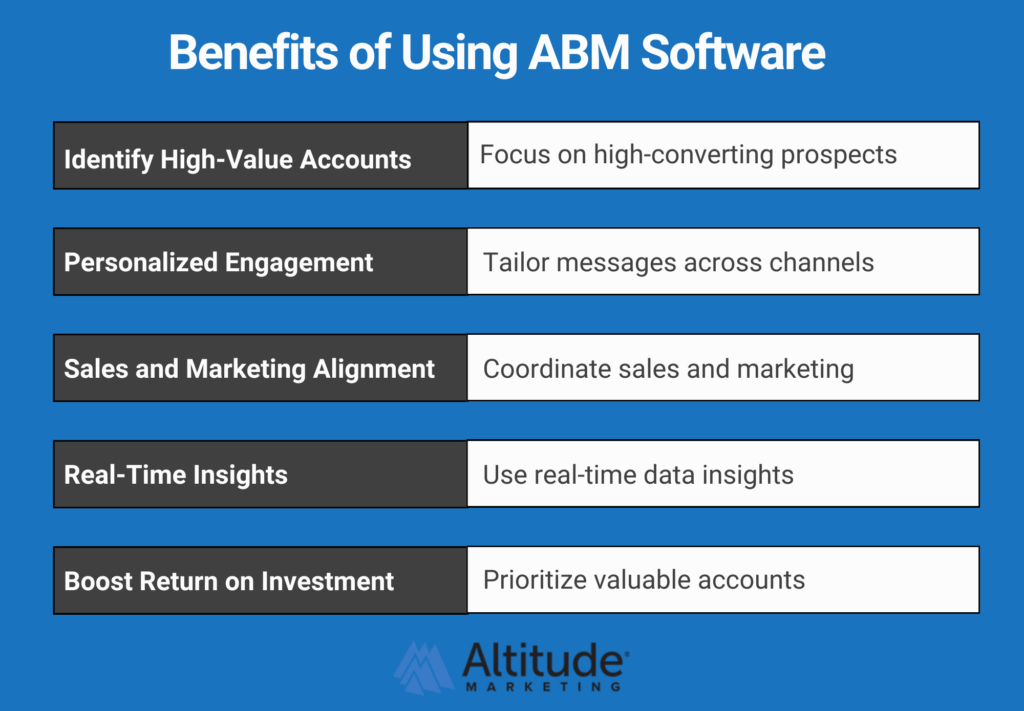
How to Create a Successful ABM Strategy
A well-defined ABM strategy ensures that marketing and sales teams work in sync toward shared goals, focusing on the most valuable accounts. Below is a step-by-step guide to building an effective ABM strategy:
1. Ideal Customer Profile (ICP): Build a Clear Target
Your ICP is the blueprint for identifying accounts that offer the highest potential value.
- What to do: Identify key attributes like industry, company size, revenue, and location.
- Why it matters: A detailed ICP ensures you target the right accounts aligned with your business objectives.
- How to align teams: Collaborate with sales to reflect real-world buyer behaviors and preferences.
- Next steps: Use these insights to develop a target account list that matches your goals.
2. Sales and Marketing Alignment: Work as One Team
Sales and marketing teams need to work together seamlessly throughout the ABM process.
- What to do: Set common objectives and align around shared KPIs.
- How to create unity: Develop consistent messaging frameworks across all channels.
- Tool tip: Use a centralized ABM platform to track progress, measure engagement, and manage collaboration in real-time.
- Outcome: Alignment minimizes friction, ensuring a smoother customer experience.
3. Personalized Campaigns: Tailor Your Outreach
Every account is different, so your campaigns should reflect that uniqueness.
- What to do: Design multi-channel campaigns tailored to each account’s needs.
- How to engage stakeholders: Customize emails, ads, landing pages, and offers to address specific challenges for individual decision-makers.
- Why this works: Personalized outreach resonates better and builds trust, helping accounts progress through the pipeline faster.
4. Multi-Touch Engagement: Coordinate Across Channels
Consistent engagement across multiple touchpoints keeps your accounts moving forward.
- How to execute: Launch coordinated outreach efforts across email, ads, social media, and events.
- Track performance: Monitor engagement metrics at each touchpoint to assess how accounts are progressing.
- Automate smartly: Use automation tools to trigger follow-ups and nurture leads based on real-time behavior.
5. Measure and Optimize: Continuously Improve
Measurement and feedback are essential to refining your ABM strategy.
- What to track: Monitor KPIs like engagement levels, conversion rates, and deal sizes.
- How to assess: Evaluate ROI at the account level to identify what’s working.
- Optimize effectively: Use insights from campaigns to fine-tune your strategy continuously for even better results.
Once you’ve established your ABM strategy, it’s crucial to implement it with the right tools. Below are some of the best ABM platforms that can help drive your strategy forward and deliver measurable results.
Top ABM Software Tools for 2024
Here are some standout ABM platforms helping companies unlock the full potential of their B2B pipelines:
Cognism
Cognism specializes in high-quality B2B data, with powerful tools for contact verification and intent data collection. Its Diamond Data feature ensures that marketing teams can connect directly with decision-makers.
6sense Revenue AI
By harnessing AI-powered insights, 6sense predicts account behavior and purchasing intent. It supports marketers by delivering personalized messages at the right time in the customer’s buying journey.
Demandbase
A go-to platform for many B2B companies, Demandbase offers features like intent data, account segmentation, and ad personalization, helping marketers track and measure campaign success.
HubSpot
Known for its all-in-one marketing solutions, HubSpot’s ABM platform offers seamless integrations, lead management, and multi-channel campaign capabilities, perfect for companies of all sizes.
Terminus
Terminus excels in running omnichannel ABM campaigns. With features like account targeting, CRM integration, and performance analytics, it simplifies account engagement across email, social media, and ads.
Key Features to Look for in ABM Software
When choosing the right ABM platform, businesses should consider the following:
1. Personalization Capabilities
Personalized campaigns are essential to ABM. The platform should enable segmentation based on behaviors and demographics and allow customization of emails, ads, and landing pages. This ensures tailored content for each stakeholder, building trust and relevance. Personalized outreach helps boost engagement and improves conversion rates by meeting specific account needs.
2. Audience Targeting
Effective ABM platforms offer firmographic and behavioral targeting to focus on high-value accounts. The tool should help identify decision-makers and influencers within accounts to ensure messages reach the right people. Accurate targeting minimizes wasted resources and ensures outreach aligns with buyer intent, leading to more meaningful engagement and higher conversion.
3. Ease of Use and Support
A user-friendly platform is critical for adoption. Look for tools with intuitive interfaces and smooth workflows to minimize learning curves. Reliable customer support, tutorials, and documentation help ensure teams can troubleshoot issues quickly. Platforms with continuous support and training resources enable teams to stay productive and use the software effectively over time.
4. Performance Reporting
Comprehensive reporting tools allow businesses to track engagement, conversions, and ROI at the account level. The ability to generate custom reports ensures teams can monitor key metrics relevant to their campaigns. Real-time insights provide opportunities for continuous optimization, ensuring teams can quickly pivot to strategies that yield better results.
5. Seamless Integration
The platform should integrate easily with existing CRMs and marketing tools to create a unified workflow. Integration ensures that data flows smoothly across departments, providing real-time insights and better collaboration. With seamless syncing, teams can coordinate their efforts, ensuring consistency in messaging and efficient tracking of customer interactions.
Feature | What to Look For | Why It Matters |
Personalization Capabilities | Segmentation and customized content | Builds trust and boosts engagement. |
Audience Targeting | Firmographic and behavioral targeting | Aligns outreach with buyer intent. |
Ease of Use and Support | Intuitive interface with training options | Ensures smooth adoption and productivity. |
Performance Reporting | Real-time analytics and custom reports | Refines strategies with actionable insights. |
Seamless Integration | CRM and tool compatibility | Enhances collaboration and data flow. |
These features ensure your ABM platform supports personalized campaigns and seamless team collaboration, driving meaningful engagement and sustainable growth.
How ABM Software Transforms B2B Pipelines
ABM tools create highly coordinated, data-driven marketing pipelines, improving both sales efficiency and campaign outcomes. With automation, teams can launch multi-channel campaigns that maintain personalization at scale. This ensures prospects receive consistent, relevant messaging throughout their journey.
Additionally, AI-based ABM platforms surface in-market opportunities, enabling sales teams to prioritize high-value leads. This strategic focus results in better conversion rates, shorter sales cycles, and increased customer retention. By centralizing data, ABM aligns marketing and sales teams around common objectives, improving follow-up efforts and enhancing customer relationships over time.
ABM isn’t limited to attracting new clients – it also nurtures existing accounts for upselling and cross-selling opportunities. This long-term approach transforms pipelines, ensuring sustainable growth.
Strengthen Your B2B Strategy with ABM Software
ABM software plays an important role in driving revenue growth through focused, targeted campaigns. From identifying key prospects to optimizing conversions, the right platform brings teams together, streamlines outreach, and builds lasting client relationships. Whether refining your approach or starting fresh, investing in ABM software ensures higher ROI and sustainable growth in 2024 and beyond.
FAQs
What is an example of account-based marketing?
An example of ABM is a software company targeting a Fortune 500 client by tailoring ads, emails, and personalized landing pages specifically for that company’s decision-makers and influencers.
What are the three types of account-based marketing?
Strategic ABM – Focuses on a single high-value account with fully customized campaigns tailored specifically for that account.
ABM Lite – Targets a small group of similar accounts with semi-personalized campaigns, balancing effort and scale.
Programmatic ABM – Engages a large number of accounts using automated, scalable, and personalized content efficiently.
How much do ABM platforms cost?
ABM platforms typically cost between $30,000 to $100,000 per year, depending on features, integrations, and the size of the business. Some vendors offer flexible plans for smaller companies.
Who uses account-based marketing?
ABM is used by B2B companies, particularly in industries like software, technology, finance, and manufacturing, where long sales cycles and complex buying processes require personalized engagement with key accounts.
Why is account-based marketing better?
ABM focuses on high-value accounts, aligning sales and marketing efforts, improving resource efficiency, and delivering higher ROI by targeting decision-makers directly, leading to stronger relationships and faster conversions.
Ready to elevate your B2B marketing?
We help leading business-to-business brands hit their marketing goals. Get in touch to learn how Altitude Marketing can help you reach your peak performance.

